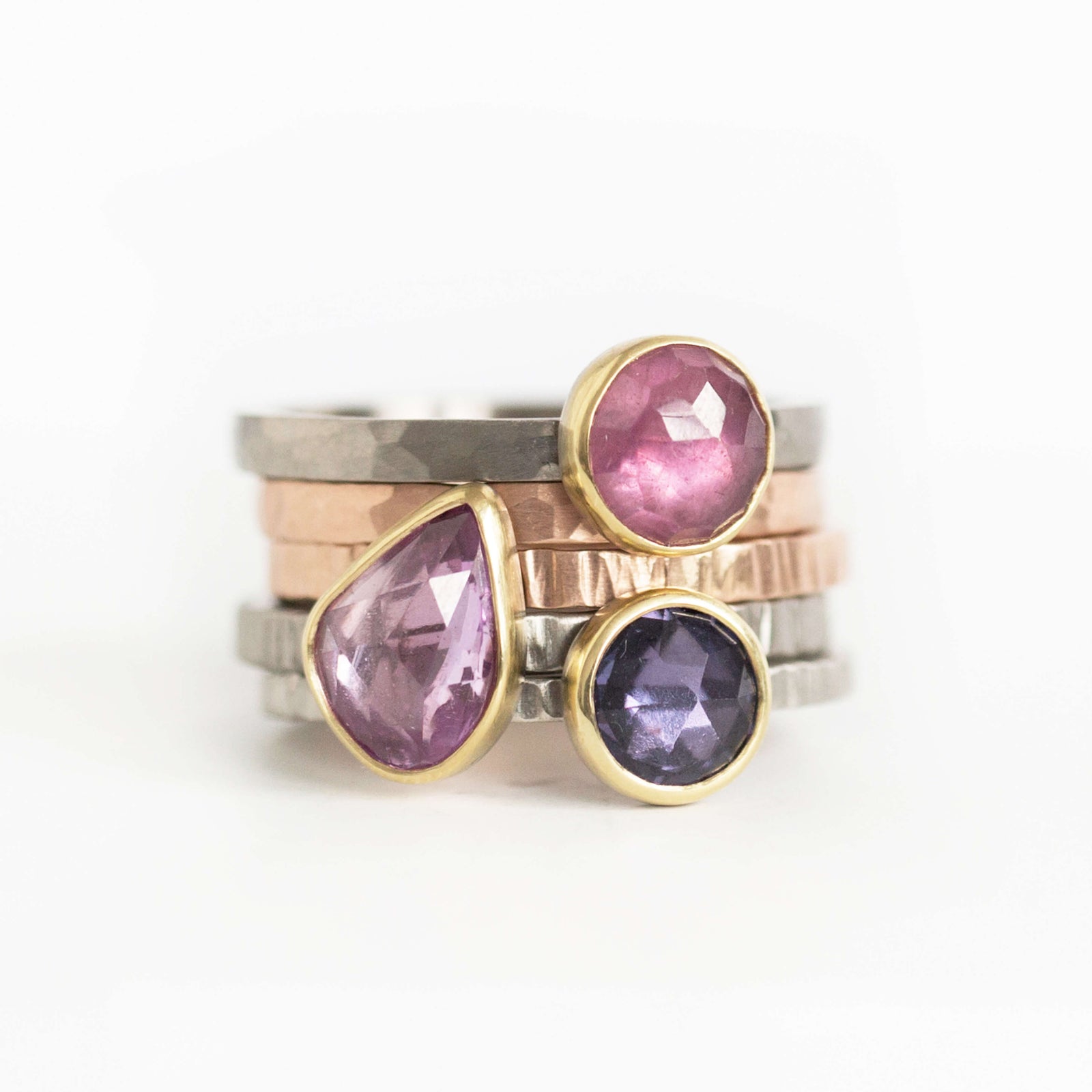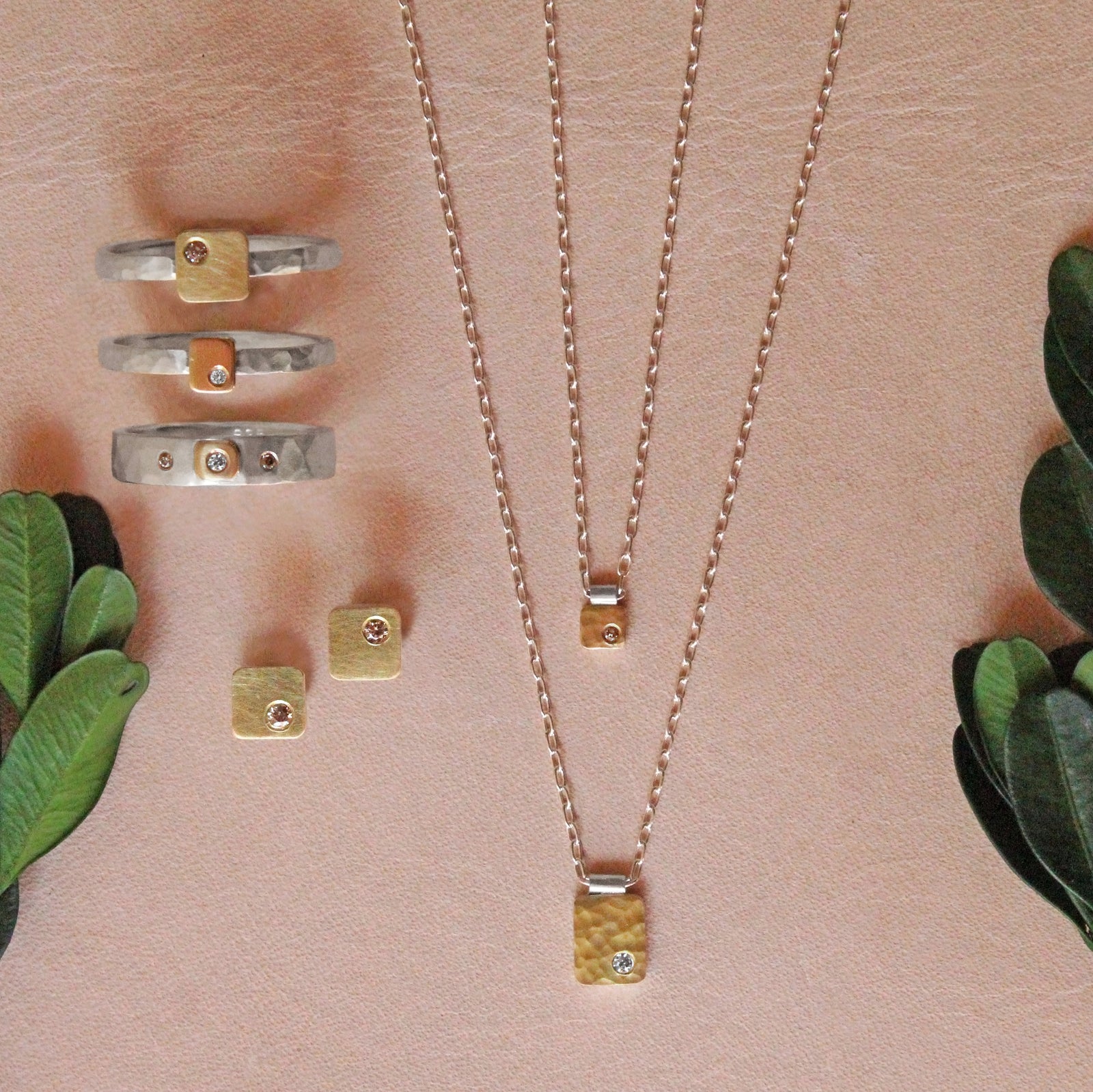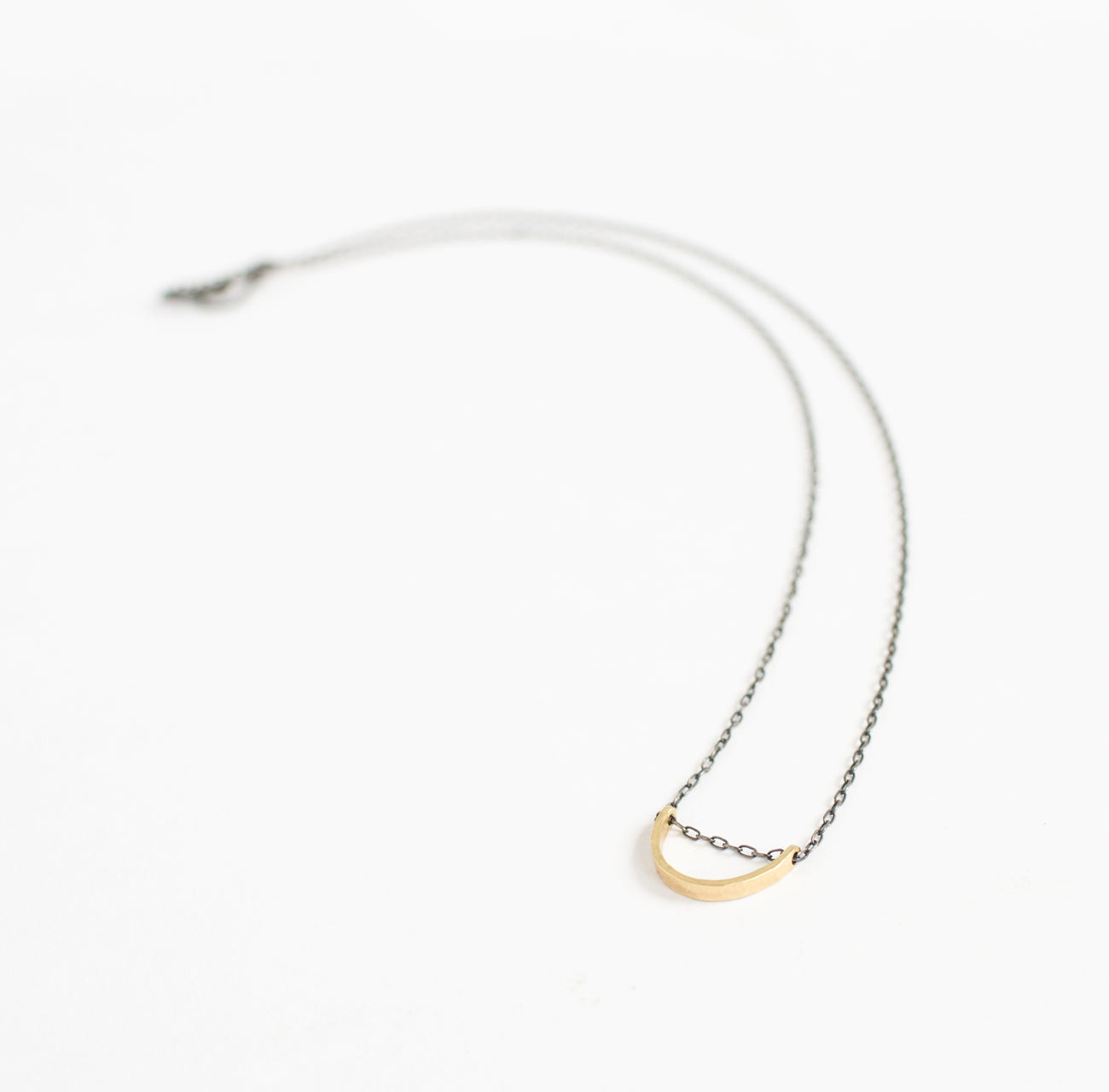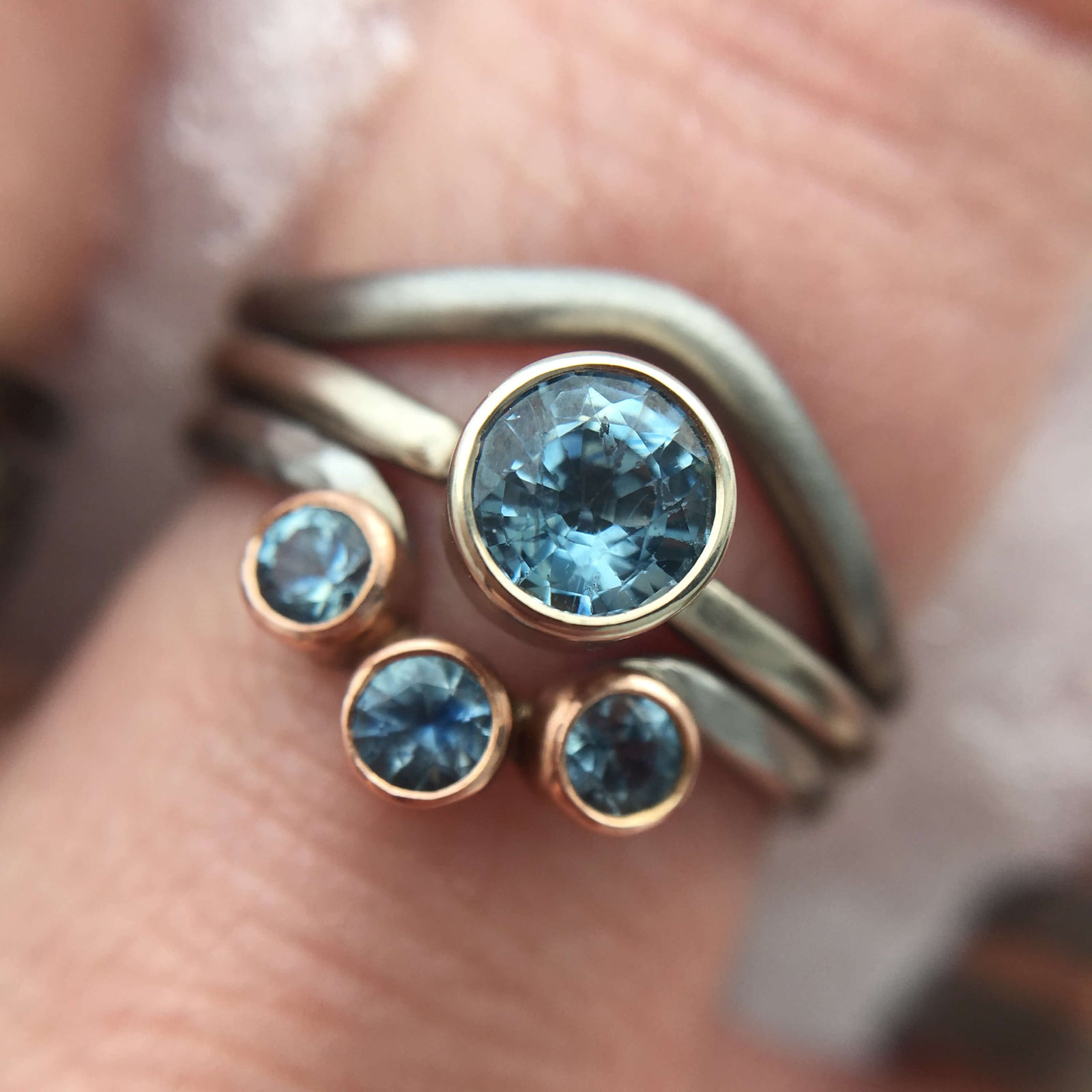Your Cart is Empty
EC Design Studio is open for drop-in's Thursdays 12-5pm and Saturdays 11-4pm, no appointment needed.
EC Design Studio is open for drop-in's Thursdays 12-5pm and Saturdays 11-4pm, no appointment needed.
EC Design Studio is open for drop-in's Thursdays 12-5pm and Saturdays 11-4pm, no appointment needed.
EC Design Studio is open for drop-in's Thursdays 12-5pm and Saturdays 11-4pm, no appointment needed.
Salt and Pepper Diamonds
Sapphire Candy Shoppe
Signature Cell Collection
Minimalist Essentials
Contour Stacking Bands
Sapphire Candy Shoppe

Sapphire jewelry so juicy you'll want to eat it!
Signature Cell Collection

The EC Design classics
Minimalist Essentials

Beautifully simple
Contour Stacking Bands

Customize your wedding bands!
June 15, 2021

August’s primary modern birthstone is peridot, the Gem of the Sun, which ranges in color from light celery green to a deep olive green. A secondary stone associated with August birthdays is spinel, which comes in a variety of colors but is most commonly found in shades of pink and red. The ancient birthstone for this month is sardonyx, which is composed of layered minerals resulting in stripes of red-brown, black, and white. For the purpose of this post, we will focus on the modern and more well known August birthstone, the peridot.
Unlike most gemstones, peridot is found only in shades of green and cannot be artificially enhanced. The darker the green, the higher the iron content (and subsequently, the value). The most sought after color of peridot is pure, grass green. Peridot has a hardness rating of 6.5-7 and is classified as moderately resilient. Being a softer gemstone, peridot is not recommended for use in everyday rings. It is better suited for special occasion rings, earrings, and necklaces. Additionally it should not be cleaned with an ultrasonic cleaner or steam, warm soapy water and a soft brush will suffice. Peridot jewelry should be stored with care to avoid scratching its delicate surface.
Although peridot is classified as moderately resilient, it is considered an ‘extreme gem’ by the Gemological Institute of America due to how it is created. Peridot is not formed in the Earth’s crust like most semi-precious stones. This beautiful green stone is born of molten rock deep within the Earth’s upper mantle, eventually making it to the surface via incredible forces - much like a diamond. Most peridot used in jewelry today is mined in regions throughout Asia and Africa. Records of this unique stone date back thousands of years and it was quite popular among Egypt’s pharaohs; it is considered the national gem of Egypt to this day and referred to as the ‘gem of the sun’. The largest cut peridot known to date was discovered in Egypt and is over 300 carats. It is currently on display at the National Gem and Mineral Collection at the Smithsonian Institution in Washington, D.C. Peridot can also be found in the United States, specifically in areas affected by volcanic activity, Arizona and Hawaii for example. Hawaii’s Peridot Beach has such a high level of olivine, a mineral form of peridot, that its sand shines with a green glow.
The ancient Egyptians and present day gem enthusiasts revere peridot as a stone of compassion, peace, harmony, good health, and restful sleep. From ancient times to today, people around the world cherish the cheerful beauty of this delightful green stone.
Want to be the first to hear about new releases, sales, and special offers? Sign up here to stay in the loop.